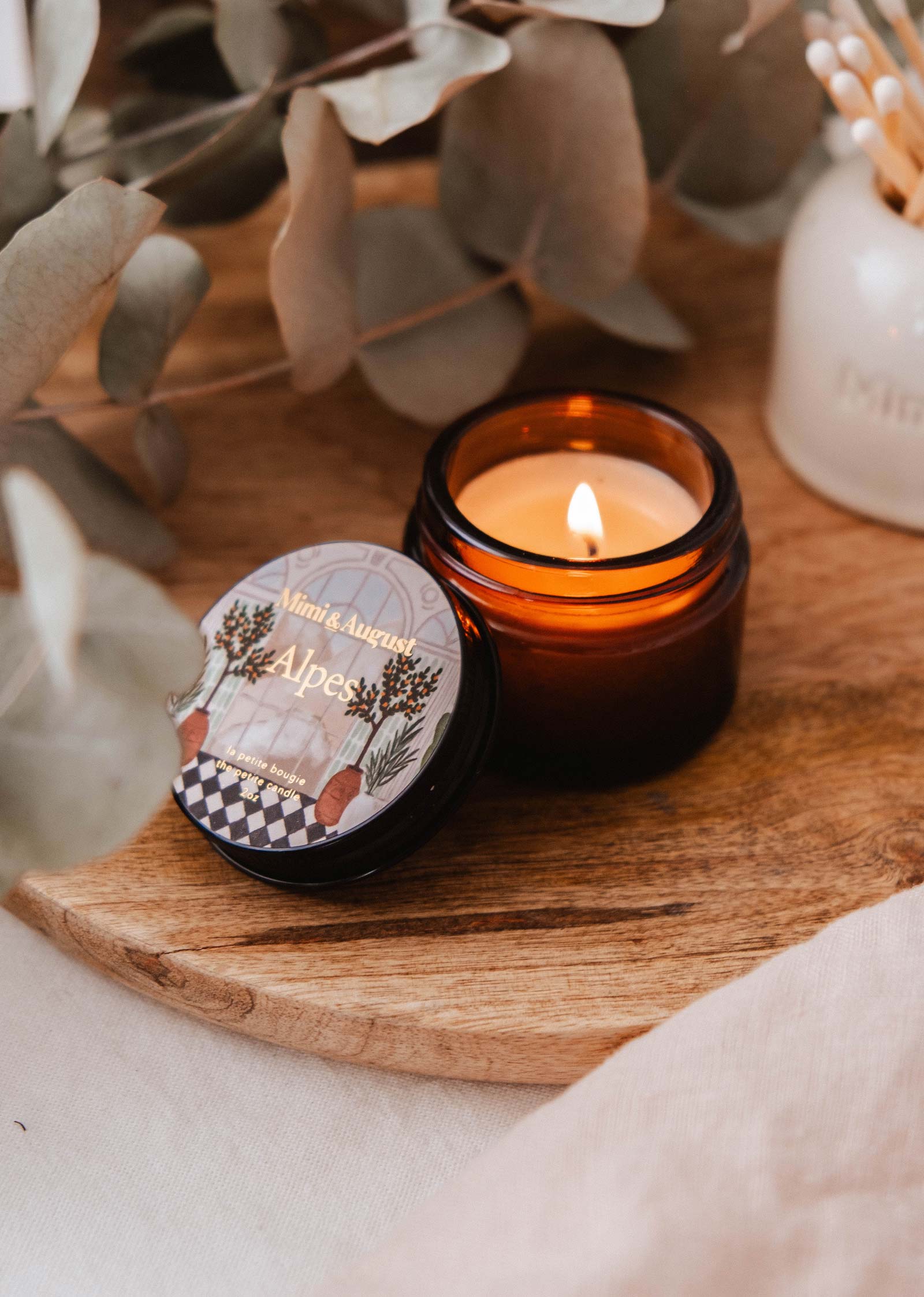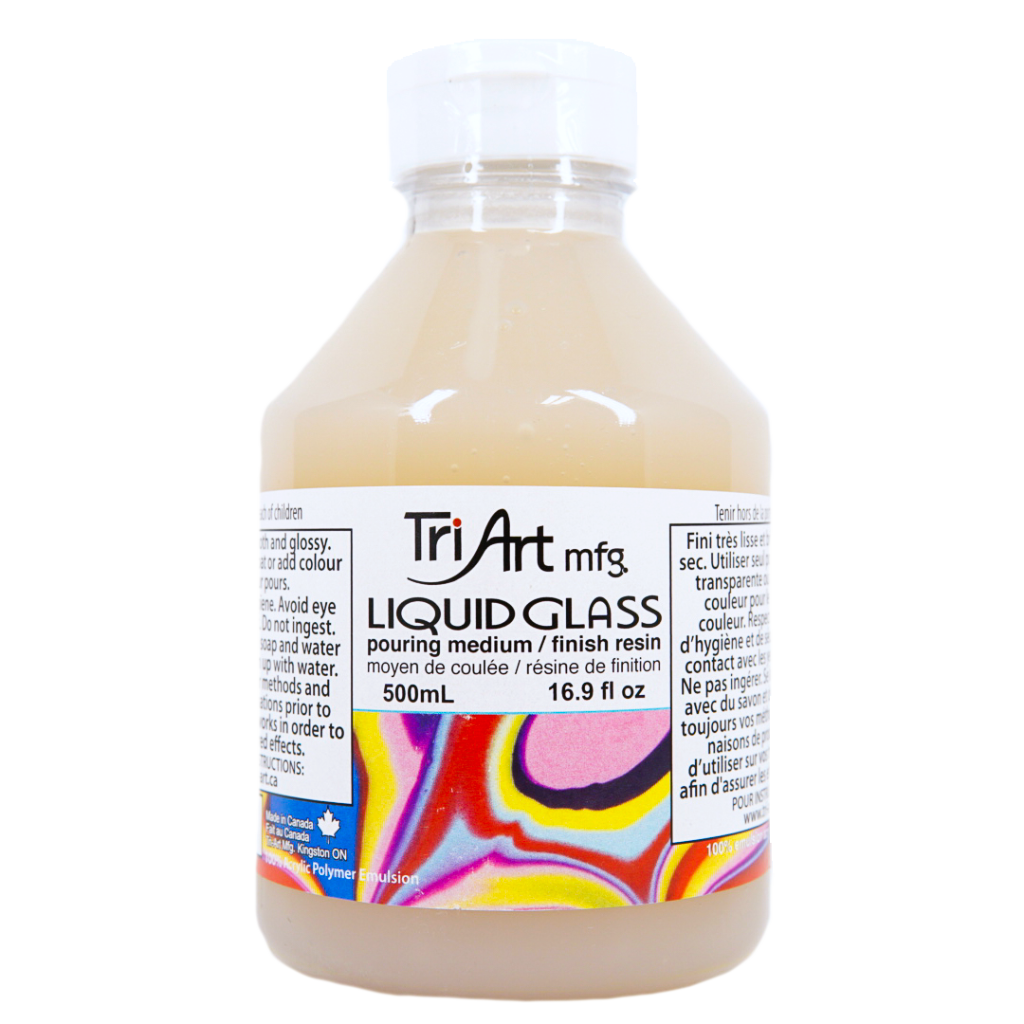
Sandro Botticelli, Venus and Mars, c 1485. Tempera and oil on poplar panel, 69 cm x 173 cm, National Gallery, London. Public Domain. Circa Wiki Images.
Beneath their colourful appearance and creamy textures, oil paints conceal a fascinating formulation that has evolved considerably since their rise to popularity in 15th century Renaissance Europe. Oil and pigment are only the beginnings of crafting artists’ quality oil paints, especially in modern formulations. Today a range of natural oils, drying agents, and semi-synthetic alkyds are used to manufacture high quality artists’ oil paints.

©Austin Howlett, Untitled, 2020, oil on panel, 18″x24.” Painted with Tri-Art oil paints.
Plants, Paint and Polymerization: Understanding Historical Oil Choices
Not all oils are made equal. Most of the oils in our cupboards are unsuited to making paint. If applied to any surface, they would remain hopelessly sticky, if not merely liquid, forever. Oils for paint must be carefully selected for their ability to ‘dry.’ Unlike water-based mediums like acrylics, oils do not ‘dry’ through an evaporative process but undergo a chemical reaction that changes the liquid oil into a solid film. This is partly why oil paints can be more highly pigmented than water-based acrylic paints – they exhibit no volume loss on drying, leaving the maximum amount of binder to hold the colour particles.
Within a bottle of oil is a mixture of fats called lipids. The properties of these lipids, and the oil, are defined largely by the content of even smaller component parts, the fatty acids. You may recognize some broad categories found on nutritional labels like saturated, unsaturated and trans-fats. In drying oils used to make paint, the majority of fatty acids will be unsaturated, meaning they contain chemically reactive sites that will allow the oil to undergo a complex series of reactions called polymerization. In the presence of oxygen, the reactive sites slowly link together, transforming the free-flowing lipid molecules into a solid film formed by a large tangled network.
Historically and to this day, linseed oil continues to be one of the most popular drying oils. It’s extracted from the flax plant, also the source of linen, long used as a canvas for painting. Jan Van Eyck is often falsely miscredited for inventing oil painting in the 15th for his mastery of his technique – finely glazing and blending layers of linseed oil paint.[i] Linseed oil became the most popular drying oil for paint because it contains a high portion of the fatty acid linolenic acid. With several reactive sites, linolenic acid gives linseed oil the fastest drying rate of any unmodified, natural oil. The many bonds created between these fatty acids also create a robust, strong oil film. Nearly every painting you see preserved in a museum for us to enjoy owes its thanks to the humble flax plant – linseed oil remained a staple from the wild Renaissance works of Hieronymus Bosch, to the modernists of the 20th century.

Flowers of the flax plant (Linum usitatissimum), Ottawa, Ontario, Canada by D. Gordon E. Robertson. CC BY-SA 3.0.

Jan Van Eyck. The Arnolfini Portrait, oil on oak, 1434. National Gallery, London. Public Domain, via Wiki Images. Jan Van Eyck is often falsely credited with inventing oil painting for his early and sublime mastery of the media.
Despite its vast popularity, the fast and well drying linseed oil came with a catch. Even when highly refined, the oil remains slightly yellow in tone. This imparts a slight warm tone, effecting pale cool colors like white, yellow, and blue. Furthermore, as the oil paint dries and ages it has a tendency to yellow more. Historically other oils like walnut and poppyseed were used in attempt to circumvent this problem. Although much slower drying, these oils are also considerably less yellow to begin with. However, when allowed to fully dry, these traditional oils all likely produce paint that is indistinguishably yellowed to the human eye.[ii] When working with these mediums today it recommended that you select these not for their possibly outdated, perceived optical properties, but for their classical handling characteristics and drying time.

Linseed Oil (with seed and flax plant) By Handwerker – Own work, CC BY-SA 3.0, https://commons.wikimedia.org/w/index.php?curid=18045027

Juglans regia (the Common walnut or Persian walnut) By Böhringer Friedrich – Own work, CC BY-SA 2.5.
Beyond the Pale: Safflower and Sunflower
In search of alternative, non-yellowing oils, ultra-pale oils like safflower and sunflower oil were introduced into artists oil paints during the 1960s.

Carthamus tinctorius (Safflower) via Wiki Images.

Sunflower © Tomas Castelazo, www.tomascastelazo.com / Wikimedia Commons
The reasons for oils yellowing remains highly elusive, but oils with less linolenic acid like poppyseed, safflower and sunflower will tend to stay slightly more colourless as they age,[iii] with studies showing that safflower remains the most true to colour.[iv] Tri-Art has gone the distance to formulate their range of modern oil paints with sunflower oil. Sunflower oil contains almost no linoleic acid and is the palest drying oil currently available (paler than safflower). Not just white, but the majority of the oil line has been formulated with sunflower oil to ensure purity of colour out of the tube and over time.
Because these oils lack linolenic acid, they are also extremely slow to dry, if at all. Sunflower oil also contains antioxidant tocopherols that further inhibit the drying process that allow us to turn the oil into paint.[v] In order to capitalize on these ultra-colorless oils another additive is necessary: a drier.
Solidifying Concepts: Driers
Since its rise to popularity in the 15th century, artists have been augmenting their oil paints with additives like waxes, resins, solvents, and drying agents. Drying agents help speed the process of slow drying oils and help ensure that thickly painted impastos dry through. They work by catalyzing the polymerization reaction of the oil medium.
Historically, lead pigments would promote very effective through drying. Any area of paint that could include a white tint would greatly benefit from a small amount of this pigment that would not only speed the drying, but create an incredibly long-lasting, durable paint film. Other options included zinc, in the form of white vitriol (zinc sulphate) and ground glass, containing calcium and magnesium ions. These options are colourless and could be used to formulate any paint colour. For instance, these driers are both found in rich purples of the man’s robe in Jan van Eyck’s Arnolfini Portrait (1434). The Venetian master painter Titian would later use white vitrol in his Portrait of a Lady (1510-12) to speed the drying of his priming layers and the notoriously slow drying black colours. By the 18th and 19th century white vitriol was a popularly mentioned drier in artists’ painting manuals and catalogues.[vi]

Titian, Portrait of A Lady (“La Schiavona”), 1510-12, oil on canvas, National Gallery, London. Via Wiki Images. Public Domain. Titian used zinc driers, in the form of white vitriol to speed his priming layers and the drying of very slow drying black paints.
Zinc and calcium found in white vitrol and powdered glass remain popular in the formulation of driers today, but by far cobalt is the most popular drying agent. Historically cobalt could be added to paint as smalt – a blue glass coloured by cobalt.[vii] Today cobalt metal soaps are utilized with unparalleled effectiveness. They cause the paint film to dry to the touch quickly – even sometimes too quickly. Zinc is added to slow the action of the cobalt drier and allow the paint to evenly dry through the thickness of the film, preventing wrinkling of the surface. Further additions of calcium can aid with other characteristics like hardness and gloss.[viii] Research has shown only small amounts of cobalt driers are necessary to catalyze the drying of oil paint, and the results appear to be stable over the long term.[ix]
Tri-Art’s takes full advantage of the ultra-colourless characteristics of sunflower seed oil by utilizing these driers to create an oil paint that will dry to a stable and long-lasting paint film. This provides the ideal medium to highlight Tri-Arts finest quality pigments like quinacridone red. These are sourced internationally before being ground locally in Kingston, Ontario to the highest standard of quality. At Tri-Art all oil colours are formulated at a professional artist grade, meaning that the highest pigment load possible has been balanced with excellent handling qualities. This gives each color its maximum saturation and a creamy texture to complement the crystal-clear sunflower oil medium. Artists like Tylor McNeil have capitalized on this brilliant colour in works like XIV (Rose Series). The clarity of Tri-Art’s sunflower oil paint should ensure that McNeil’s pastel palette remains light and bright for decades to come.

©Tylor McNeil, XIV (Rose Series), 2020. Tri-Art Gesso and Oils on wood panel. www.tylormcneil.com
Colours used: Permanent Alizarin crimson, Quinacridone Red, Cadmium yellow medium hue, Phthalo Blue, Titanium White and Carbon Black.
Contemporary Colours & Modern Mediums: The Alkyds
For the modern painter, the choice of pigments is now nearly endless. Tri-Art has formulated a range of contemporary paints for the oil painter looking to expand their palette into the 21st century. Iridescent and interference colors are available in oil paint’s modern predecessor, alkyd. Seen here in the work of Kim Dorland, a specialty pigment, micaceous iron oxide, in alkyd resin creates an alluring subtle shimmer to the grey-black elements.


©Kim Dorland, Vigil, 2020, oil and acrylic on canvas, 72×60 inches. Featuring Tri-Art alkyd-oil in micaceous iron oxide.
By modifying a drying oil like linseed with a polyester resin, heat and glycerol, a new product is formed. Alkyds are oil-like in their handling qualities, but faster drying than oil, often due to the addition of a chemical drier in their formulation. Like traditional drying oils, the alkyd dries via a process of oxidative polymerization.[x]
Alkyds were the 20th century solution to the working difficulties of traditional oil paints – they were and remain to be one of the most important paint mediums of the 20th and 21st century. First synthesized in the 1920s, alkyds’ initial conceptions were difficult to work with and generally unpopular. It was utilized as a second-rate automobile coating mostly and later in the 1940s to coat war machinery. By the end of the decade, then surplus war-time paint and chemical factories needed to develop new paint formulations that were more user friendly if they wanted to survive in a civilian marketplace. During the 1950s easy to apply formulations made with cheap soy and cotton seed oil made alkyd paints incredibly popular as affordable housepaint. Previously house paints were often oil-resin based and applied by hired painter-decorators. With the advent of alkyd house paints, the DYI era of home décor really began.[xi]
Alkyd paints quickly became popular with artists, even though they were not designated for such use.[xii] Picasso is thought to have experimented with alkyd paints as early as 1932.[xiii] Others include Franck Stella and later Jackson Pollock. Early alkyds were available as housepaint and industrial coatings, meaning they were flowing, thin paints.[xiv] This flow was coveted by modernist painters looking to eschew the old ways of oil painting with brushes and palettes, instead painting flat fields of colour that would come to typify the mid-century art movement in North America.
Like acrylics, alkyds have come a long way since their initial conception. Artists quality alkyds would not be introduced until 1970s. Unlike the early alkyd industrial car and house paints, artist formulations like Tri-Art’s finest quality alkyds are formulated to be nearly solvent free and clear upon drying. Fumed silica is the modern update to powdered glass that gives Tri-Art alkyds their creamy, bodied texture.
From Ancient to Modern: Oil to Alkyd
In 1434 Jan Van Eyck painted The Annunciation using the medium he perfected – linseed oil colours. The prismatic plumage of the angel’s wings was to become a popular feature of 15th century Netherlandish devotional painting. The colorful effect he depicted now finds a modern antecedent in the spectral pigments of modern artists oils and alkyds like Tri-Arts finest artist oils and alkyds. Paint formulations have considerably evolved since van Eyck put his brush to a palette, but artists desires to create with the lush, richly saturated colours of oil endures.


Jan Van Eyck. The Annunciation, Oil transferred from wood to canvas, c. 1434. National Gallery of Art, Washington, D.C.. Via Wiki Images. Public Domain.

Tri-Art Oil Colours
Bibliography
Cairns, L K, and P B C Forbes, ‘Insights into the Yellowing of Drying Oils Using Fluorescence Spectroscopy’, Heritage Science, 8.1 (2020), 59 <https://doi.org/10.1186/s40494-020-00403-1>
Cappitelli, Francesca, and Fotini Koussiaki, ‘THM-GCMS and FTIR for the Investigation of Paints in Picasso’s Still Life, Weeping Woman and Nude Woman in a Red Armchair from the Tate Collection, London’, Journal of Analytical and Applied Pyrolysis, 75.2 (2006), 200–204 <https://doi.org/https://doi.org/10.1016/j.jaap.2005.05.008>
Gifford, E Melanie, ‘Van Eyck’s Washington Annunciation: Technical Evidence for Iconographic Development’, The Art Bulletin, 81.1 (1999), 108–16 <https://doi.org/10.1080/00043079.1999.10786874>
van Gorkum, Remy, and Elisabeth Bouwman, ‘The Oxidative Drying of Alkyd Paint Catalysed by Metal Complexes’, Coordination Chemistry Reviews, 249.17 (2005), 1709–28 <https://doi.org/https://doi.org/10.1016/j.ccr.2005.02.002>
Izzo, Francesca Caterina, ‘20th Century Artists’ Oil Paints : A Chemical-Physical Survey’, ed. by Guido Biscontin (Venice: Università Ca’ Foscari Venezia, 2011)
Learner, Thomas J S, ‘Modern Paints: Uncovering the Choices’, in Modern Paints Uncovered: Proceedings from the Modern Paints Uncovered Symposium, ed. by Thomas J S Learner, Patricia Smithen, Jay W Krueger, and Michael R Schilling (Los Angeles: Getty Conservation Institute, Los Angeles, United States, 2007), p. pp.3-16, 10 figs. (6 color), 2 tables, refs.4 no
Llamas Pacheco, Rosario, and Amparo Torrente Casado, ‘Medios y secativos en la pintura al óleo actual: una revisión de su uso y comportamiento’, Conserva, no.17, 17, pp.79-93, 8 photos, 6 tables, 19 notes, bibliog.
Mühlethaler, Bruno, and Jean Thissen, ‘Smalt’, in Artists’ Pigments: A Handbook of Their History and Characteristics. Volume 2 (Washington DC: National Gallery of Art, 1993)
Sands, Sarah, ‘On the Yellowing of Oils’, Just Paint, 2019 <https://www.justpaint.org/on-the-yellowing-of-oils/> [accessed 30 November 2020]
Spring, Marika, ‘New Insights into the Materials of Fifteenth- and Sixteenth-Century Netherlandish Paintings in the National Gallery, London’, Heritage Science, 5.1 (2017) <https://doi.org/10.1186/s40494-017-0152-3>
Standeven, Harriet, ‘“Cover the Earth”: A History of the Manufacture of Household Gloss Paints in Britain and the United States from the 1920s to the 1950s’, in Modern Paints Uncovered: Proceedings from the Modern Paints Uncovered Symposium (Los Angeles: Getty Conservation Institute, 2007)
Wicks Jr., Zeno W, ‘Drying Oils’, Kirk‐Othmer Encyclopedia of Chemical Technology, Major Reference Works, 2002 <https://doi.org/https://doi.org/10.1002/0471238961.0418250923090311.a01.pub2>
[i] E Melanie Gifford, ‘Van Eyck’s Washington Annunciation: Technical Evidence for Iconographic Development’, The Art Bulletin, 81.1 (1999), 108–16 <https://doi.org/10.1080/00043079.1999.10786874>.
[ii] Sarah Sands, ‘On the Yellowing of Oils’, Just Paint, 2019 <https://www.justpaint.org/on-the-yellowing-of-oils/> [accessed 30 November 2020].
[iii] L K Cairns and P B C Forbes, ‘Insights into the Yellowing of Drying Oils Using Fluorescence Spectroscopy’, Heritage Science, 8.1 (2020), 59 <https://doi.org/10.1186/s40494-020-00403-1>.
[iv] Sands.
[v] Francesca Caterina Izzo, ‘20th Century Artists’ Oil Paints : A Chemical-Physical Survey’, ed. by Guido Biscontin (Venice: Università Ca’ Foscari Venezia, 2011).
[vi] Marika Spring, ‘New Insights into the Materials of Fifteenth- and Sixteenth-Century Netherlandish Paintings in the National Gallery, London’, Heritage Science, 5.1 (2017) <https://doi.org/10.1186/s40494-017-0152-3>.
[vii] Bruno Mühlethaler and Jean Thissen, ‘Smalt’, in Artists’ Pigments: A Handbook of Their History and Characteristics. Volume 2 (Washington DC: National Gallery of Art, 1993).
[viii] Zeno W Wicks Jr., ‘Drying Oils’, Kirk‐Othmer Encyclopedia of Chemical Technology, Major Reference Works, 2002 <https://doi.org/https://doi.org/10.1002/0471238961.0418250923090311.a01.pub2>.
[ix] Rosario Llamas Pacheco and Amparo Torrente Casado, ‘Medios y secativos en la pintura al óleo actual: una revisión de su uso y comportamiento’, Conserva, no.17, 17, pp.79-93, 8 photos, 6 tables, 19 notes, bibliog.
[x] Remy van Gorkum and Elisabeth Bouwman, ‘The Oxidative Drying of Alkyd Paint Catalysed by Metal Complexes’, Coordination Chemistry Reviews, 249.17 (2005), 1709–28 <https://doi.org/https://doi.org/10.1016/j.ccr.2005.02.002>.
[xi] Harriet Standeven, ‘“Cover the Earth”: A History of the Manufacture of Household Gloss Paints in Britain and the United States from the 1920s to the 1950s’, in Modern Paints Uncovered: Proceedings from the Modern Paints Uncovered Symposium (Los Angeles: Getty Conservation Institute, 2007).
[xii] Harriet Standeven, ‘“Cover the Earth”: A History of the Manufacture of Household Gloss Paints in Britain and the United States from the 1920s to the 1950s’, in Modern Paints Uncovered: Proceedings from the Modern Paints Uncovered Symposium (Los Angeles: Getty Conservation Institute, 2007).
[xiii] Francesca Cappitelli and Fotini Koussiaki, ‘THM-GCMS and FTIR for the Investigation of Paints in Picasso’s Still Life, Weeping Woman and Nude Woman in a Red Armchair from the Tate Collection, London’, Journal of Analytical and Applied Pyrolysis, 75.2 (2006), 200–204 <https://doi.org/https://doi.org/10.1016/j.jaap.2005.05.008>.
[xiv] Learner.







